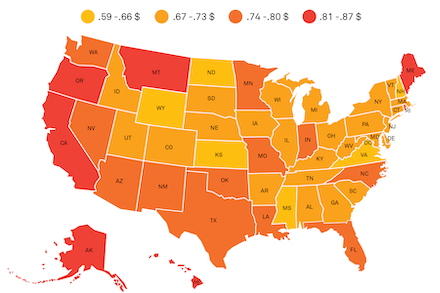The great restructure: Gender inequity culture in the nonprofit sector

As we get ready to observe Women’s Equality Day on August 26, we celebrate and advocate for women having an equal voice and building nonprofit cultures free of gender inequity.
Gender equality within nonprofits is not a special project. It should not be a consideration for a better bottom line, nor should it be cut when funding is tight. After all, women account for half the population in the world and more than half in nonprofit organizations.
Gender equality should be a core value integrated into every aspect of a nonprofit organization: operations, programs, policies, advocacy, partnerships, communications, etc. Why? For starters, gender equality is a human right, and the social movements that nonprofits support are interconnected, with human rights at the core of the conversation. Additionally, representation of women is huge in the nonprofit sector, isn’t it?
Well, yes and no.
Gender Disparity in Leadership
According to the American Association of University Women, “Women make up 75% of nonprofit employees.” With this high percentage of women workers, one might think that there would be no gender disparity in the power structure within nonprofit organizations, but the report goes on to say that “only 42% of nonprofit boards are led by women and only 22% of nonprofits are run by a woman Executive Director/CEO” (2018).
This data showcases that even though the nonprofit sector is predominantly comprised of women, it doesn’t mean that the power structure represents the majority.
Gender Pay Gaps
Further research demonstrates that not only are women underrepresented in leadership positions in nonprofit organizations, but they also receive less pay compared to men. The National Council of Nonprofits reported, “Females on average earn around 24.8% less than males in the nonprofit sector” (2017). When analyzing data of overall pay across the board, white women earn $0.83 per every dollar a man earns, and black women earn $0.64 per every dollar a man earns (U.S. Census Bureau, 2020).
The Way Forward
The bottom line is that nonprofit organizations have a mission and vision statement to fill gaps within communities. Addressing gender inequity – as well as intersecting inequities such as race, class, sex, and abilities–is vital for the social justice movements that are tied to nonprofit organizations.
For example, a nonprofit that is focused on providing housing for survivors of sexual assault will quickly realize that the housing they provide does not result in violence ceasing altogether. Merely providing services to marginalized groups while upholding a status quo may only create a stopgap. Truly helping to end the cycle of abuse requires a commitment to social justice movements that abolish poverty, misogyny, racism, etc. This is getting to the core of the issue.
However, due to the institutionalization of becoming an IRS Tax-Exempt nonprofit, the focus moves away from the larger social justice movement and towards providing services. When a movement becomes an institution, through tax-exemption processes, there are oftentimes restrictions against political lobbying, as well as requirements to adhere to complicated funding. This causes a shift away from what the real essence was in creating the nonprofit, as well as integrating the patriarchal power systems that are at play.
This can lead to an organizational culture that doesn’t have equity at its heart.
Here are some questions to consider when determining if gender inequity persists in your nonprofit culture:
- Hiring and recruitment processes
- Are you getting input from various contributors for job descriptions?
- Where are you posting?
- Equal pay
- What are the gender pay gaps?
- What are the racial, class, sex, and other pay gaps?
- How are skills scored?
- Leadership Equity
- What is the make-up of leadership?
- Who is deciding the make-up?
- Promotions
- Is there a consistent way to measure performance for all workers?
- Are men being promoted more often and more quickly?
- Training
- Does your nonprofit provide gender equity training or a budget for this training?
- Transparency
- Does your nonprofit publish pay scales?
- Are promotions justified and available for review?
- Benefits
- Does your nonprofit offer maternity leave, health insurance, flexible working schedules, etc.?
- Facility
- Does your facility take into consideration different bodies other than male? (i.e., pregnancy parking, ADA compliance, room temperatures, etc.)
- Communication and branding
- In your communications, do you have images and copy that promotes equity?
- Advocacy
- Do you align with other organizations that focus on social justice movements?
- Are your funders supportive of social justice movements?
- Values
- Is gender equity at the heart of your nonprofit?
- Does your leadership have accountability and support gender equity?
These are questions that must be analyzed and remain at the core of your nonprofit. Remember, gender equality (and all equity) is not a special project. It should be integrated into the values of your nonprofit as it intersects with so many social justice movements and can recreate the entire culture of the nonprofit industry.
“I never doubted that equal rights was the right direction. Most reforms, most problems are complicated. But to me, there is nothing complicated about ordinary equality.” ~ Alice Paul, c. 1915






